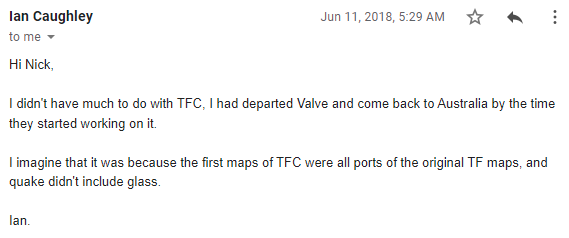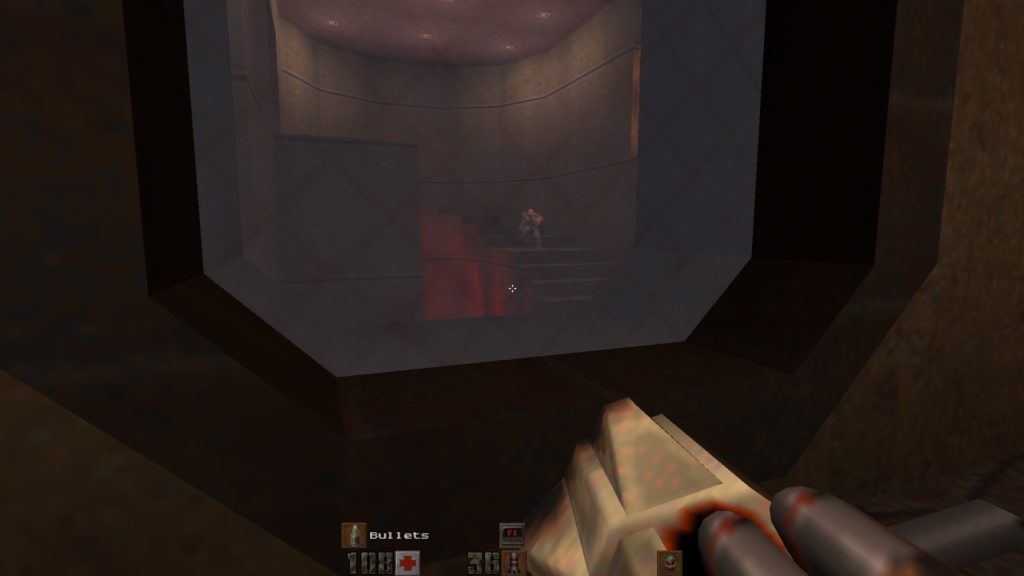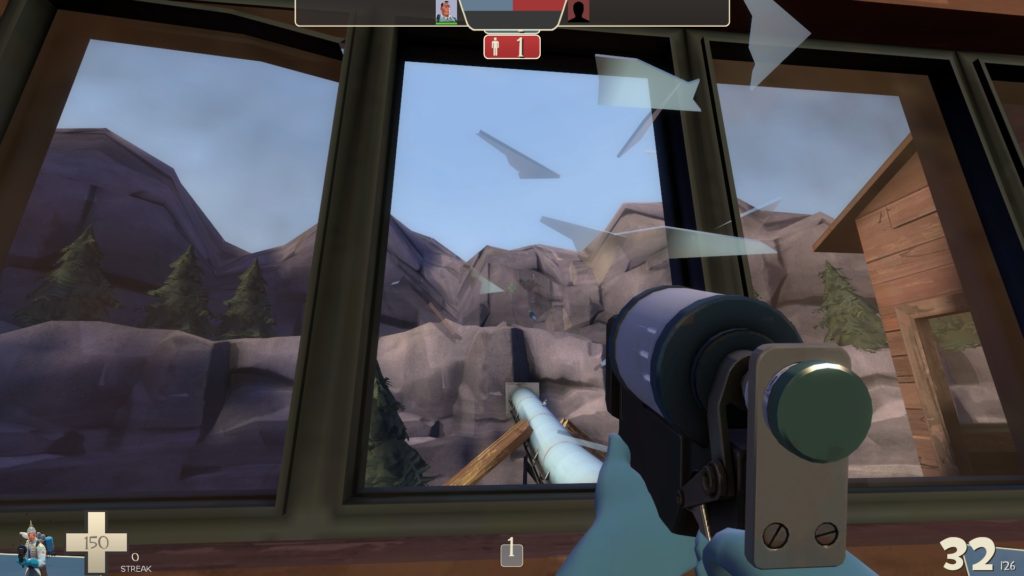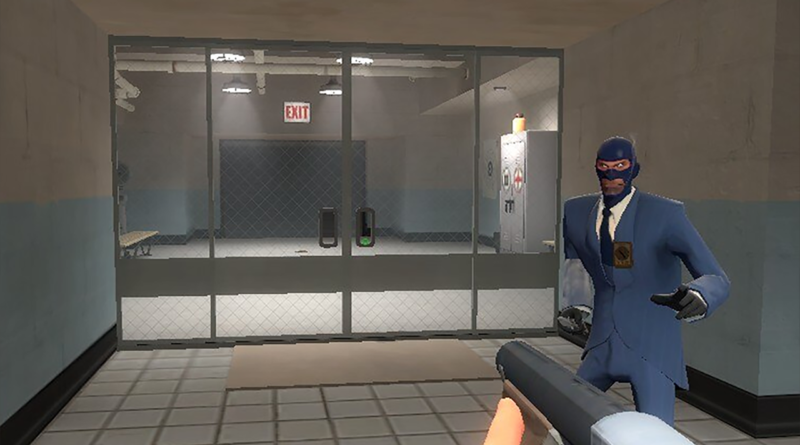A Brief History of Glass in Team Fortress
It may seem odd that I’m devoting a whole article to glass, an incredibly common and straightforward building material. Some games let you break it, others let you shoot through it, and many don’t. Within a few minutes of playtime, you’ll probably notice Team Fortress 2 is decidedly in the latter category. Case closed?
Not quite, because glass actually has a more checkered history than you’d first expect. It first came to my attention when I started playing Team Fortress Classic and noticed that only one map had glass: Rock2, letting the flag-scoring player watch their pursuers die to toxic gas.

But why? Why is this the only case of glass in the entire game? TFC uses the GoldSrc engine, and Half-Life uses glass all over the place. Curious about the discrepency, I emailed all three of the original Team Fortress devs (Robin Walker, John Cook, and Ian Caughley) back in 2018 to ask. And one of them wrote back!
 He was completely right, of course, and I really should have thought of that. While TFC runs on the Half-Life engine, it was a port of a Quake mod. And when I later played Quake, I noticed that it also lacked glass in any fashion. But it wasn’t always that way. In fact, that devs had tried to make working glass, but ultimately never succeeded within the development time they had to release the game. Their unused version of glass has literally trillions of hitpoints, essentially only allowing map creators to break it.
He was completely right, of course, and I really should have thought of that. While TFC runs on the Half-Life engine, it was a port of a Quake mod. And when I later played Quake, I noticed that it also lacked glass in any fashion. But it wasn’t always that way. In fact, that devs had tried to make working glass, but ultimately never succeeded within the development time they had to release the game. Their unused version of glass has literally trillions of hitpoints, essentially only allowing map creators to break it.

Team Fortress, the original Quake mod, inherited this lack of glass in its initial maps. It wasn’t a conscious design choice, just a byproduct of where these maps originally came from. Valve, when creating the GoldSrc engine, built glass from the ground up and actually included a surprising amount of interactivity. Glass doesn’t just shatter when you shoot it, it’ll fracture into spiderweb cracks and only really come apart when the player crowbars/jumps through.

Team Fortress 2, due to being built from the ground-up and not ported from Quake, included glass from the beginning. However, unlike Half-Life, the devs intentionally chose to avoid breakable glass. This means it only serves to allow the player to see other sections of map. As mentioned in the Gravelpit developer commentary:
Height is a useful feature when designing defensible buildings. For instance, the cap B building needs to be defended from all directions. The height and windows at all sides give defenders in this building the advantage when launching rockets and grenades from within. Bulletproof glass and some windows lets them safely view approaching enemies.
Destructible glass probably didn’t survive due to the general lack of map interactivity in Team Fortress 2. Maps are generally supposed to remain intact even as the server plays through multiple rounds, and perhaps the devs didn’t want players to destroy the safety of these transparent viewpoints. Better that players know they can always trust glass to shield them.

